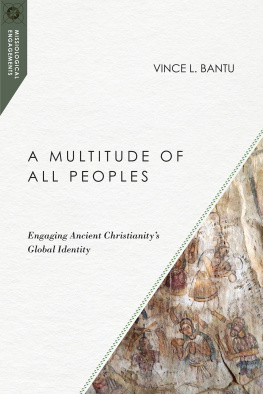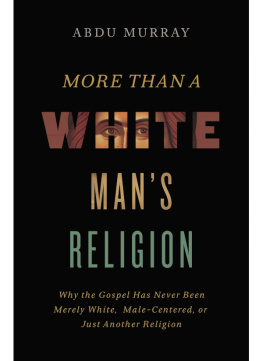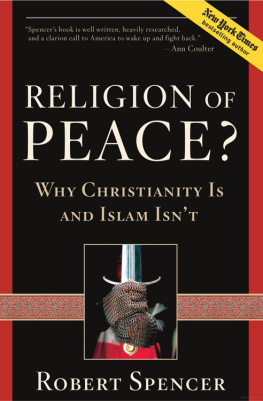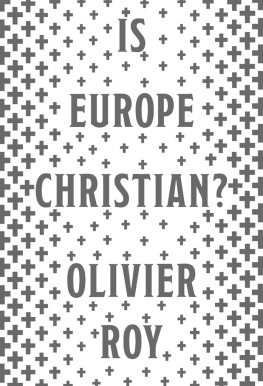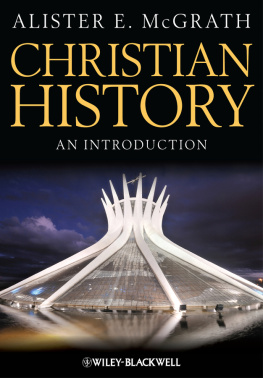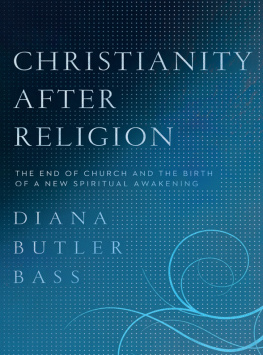Sommaire
Pagination de l'dition papier
Guide
A MULTITUDE OF
ALL PEOPLES
Engaging Ancient Christianitys
Global Identity
VINCE L. BANTU
InterVarsity Press
P.O. Box 1400, Downers Grove, IL 60515-1426
ivpress.com
2020 by Vince Bantu
All rights reserved. No part of this book may be reproduced in any form without written permission from InterVarsity Press.
InterVarsity Pressis the book-publishing division of InterVarsity Christian Fellowship/USA, a movement of students and faculty active on campus at hundreds of universities, colleges, and schools of nursing in the United States of America, and a member movement of the International Fellowship of Evangelical Students. For information about local and regional activities, visit intervarsity.org.
All Scripture quotations, unless otherwise indicated, are taken from The Holy Bible, New International Version, NIV. Copyright 1973, 1978, 1984, 2011 by Biblica, Inc.Used by permission of Zondervan. All rights reserved worldwide. www.zondervan.com. The NIV and New International Version are trademarks registered in the United States Patent and Trademark Office by Biblica, Inc.
Cover design: Cindy Kiple
Interior design: Beth McGill
Cover image: Vince Bantu
ISBN 978-0-8308-2810-4 (digital)
ISBN 978-0-8308-5107-2 (print)
This digital document has been produced by Nord Compo.
For my mami chula
Acknowledgments
T here have been so many community members the Lord has placed in my life without whom this work would not have been completed. The editorial team at InterVarsity Press has been massively helpful throughout this processJon Boyd, Rebecca Carhart, Scott Sunquist, and Amos Yong, I thank you for your guidance and patience in the publication of this book. Several colleagues provided specialized feedback for which I am profoundly gratefulJanet Timbie, Artur Obuski, Adam Ployd, Aaron Butts, Scott F. Johnson, Philip Forness, Nathan Gibson, Robert Hoyland, Stephen Rapp, Jack Tannous, Monica Blanchard, Chiara Barbati, Blake Hartung, Jeffrey Wickes, and Li Tang, thank you for the invaluable insight you provided; all remaining errors are mine.
There have been several spiritual mothers and fathers that have taught me invaluable lessons about how to follow Jesus the way he made meSoong-Chan Rah, Dante Upshaw, Brian Howell, Terry LeBlanc, Bil and Paulea Mooney-McCoy, Allen Callahan, Dennis Edwards, and Alvin Padilla, thank you for helping me to understand more of the Creators love for his people. My family is the foundation that supports all that I am and doI thank my mother for raising me in the light of the gospel; I thank my daughters, Tana and Naniki, for the joy that they inspire; I thank my wife, Diana, for her love, support, and partnership. This book is dedicated to you.
Finally, I give all thanks, praise, honor, and glory to my Lord and Savior Jesus Christ, and I pray this work is an act of worship pleasing to you.
Abbreviations
AAE | Arabian Archaeology and Epigraphy |
AHPA | Arabic History of the Patriarchs of Alexandria |
BSOAS | Bulletin of the School of Oriental and African Studies |
CCDATJ | Christian Community Development Association
Theological Journal |
CSCO | Corpus Scriptorum Christianorum Orientalium |
DOP | Dumbarton Oaks Papers |
JA | Journal Asiatique |
JAOS | Journal of the American Oriental Society |
JCSSS | Journal of the Canadian Society for Syriac Studies |
JECS | Journal of Early Christian Studies |
JRA | Journal of Religion in Africa |
JSP | Journal for the Study of the Pseudepigrapha |
JSS | Journal of Semitic Studies |
JTS | Journal of Theological Studies |
ME | Medieval Encounters |
NPNF | A Select Library of the Nicene and Post-Nicene Fathers of the Church. Edited by Phillip Schaff et al. 14 vols. Buffalo, NY: Christian Literature, 18191893. |
OC | Oriens Christianus |
PG | Patrologia cursus completus. Series Graeca. Edited by J. P. Migne. 166 vols. Paris: Migne, 18571886. |
PO | Patrologia Orientalis. Edited by Ren Graffin et al. 41 vols. Paris, 18941984. |
ROC | Revue de lOrient Chrtien |
STAC | Studien und Texte zu Antike und Christentum |
StPatr | Studia Patristica |
Introduction
The Global Religion
C hristianity is and always has been a global religion. For this reason, it is important never to think of Christianity as becoming global.
Following the valuable work of prominent missiologists, it has become commonplace among twenty-first-century Christians to highlight the significant demographic shifts in the global church. The fact that the majority of Christians now live in the Global South has led many to speak of the coming of global Christianity. Andrew Walls has challenged the contemporary church to respond to what he calls the Ephesian moment:
The Ephesian momentthe social coming together of people of two cultures to experience Christwas quite brief.... But in our own day the Ephesian moment has come again, and come in a richer mode than has ever happened since the first century. Developments over several centuries, reaching a climax in the twentieth, mean that we no longer have two, but innumerable, major cultures in the church.
Contemporary missiologists have drawn much-needed attention to the demographic shifts that have taken place in the twentieth and twenty-first centuries and have given helpful challenges to the Western, white captivity of the church. However, in drawing attention to such developments, there has been an implication that global diversity is exclusively a twentieth-century innovation of the Christian movement. Indeed, Wallss statement presents Christian diversity as a phenomenon that disappeared after the early church and has only become manifest again in the Ephesian moment of the twentieth century. Too many people, both Christian and non-Christian, still perceive Christianity as the white mans religion.
Contemporary missiology has often advanced the churchs cultural self-understanding by highlighting the unprecedented recorded numbers of Christians in Africa, Asia, and Latin America. The typical Christian of the twenty-first century is not a white man but an African woman. However, the modern global church has often been presented as emerging from centuries of a Western majority church. It is this common misconception that requires further conversation. Many contemporary missiologists and church historians would have us believe that Christianity came into Africa and Asia from Europe when the reality is quite the opposite in several significant respects. Christianity is not

